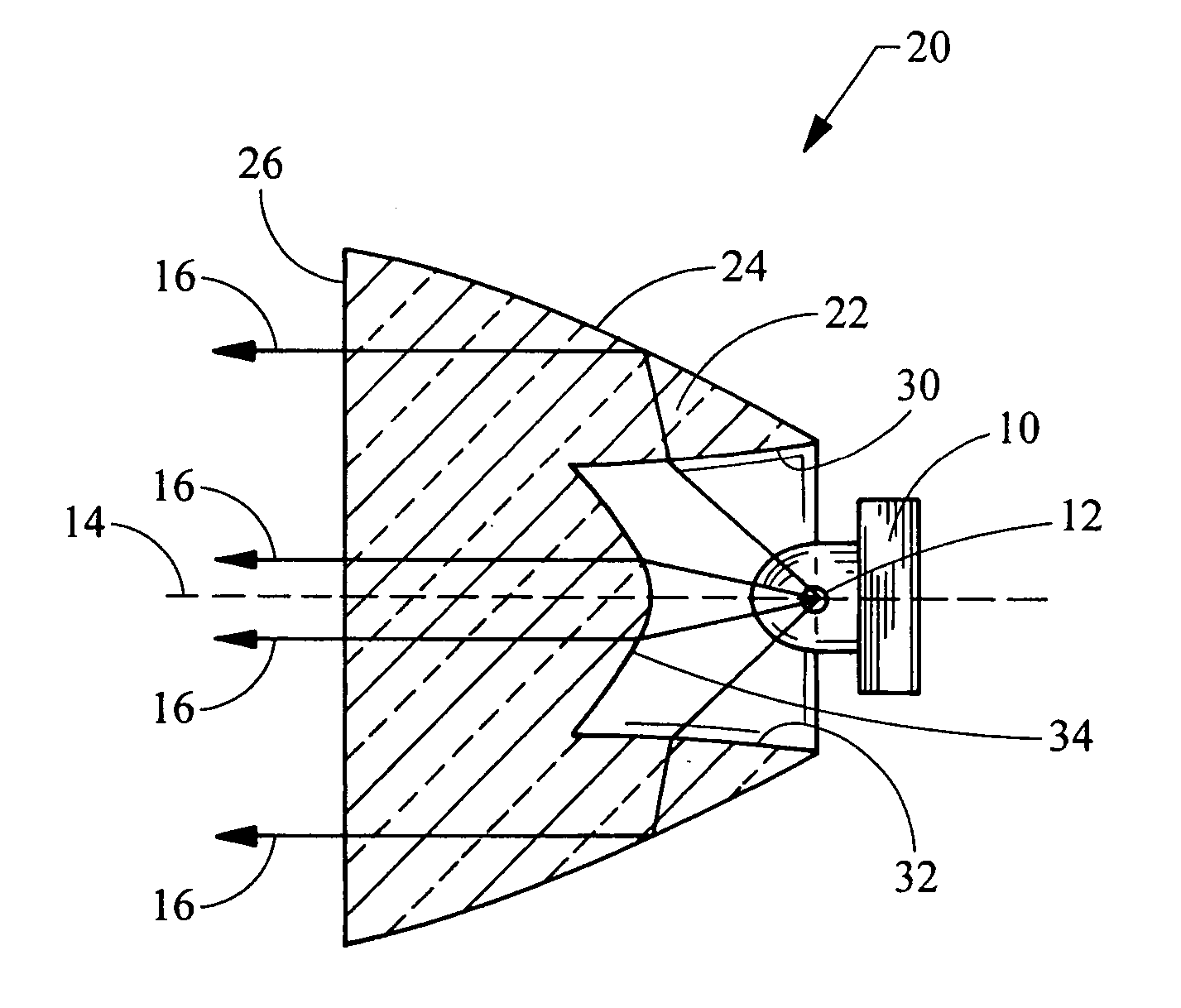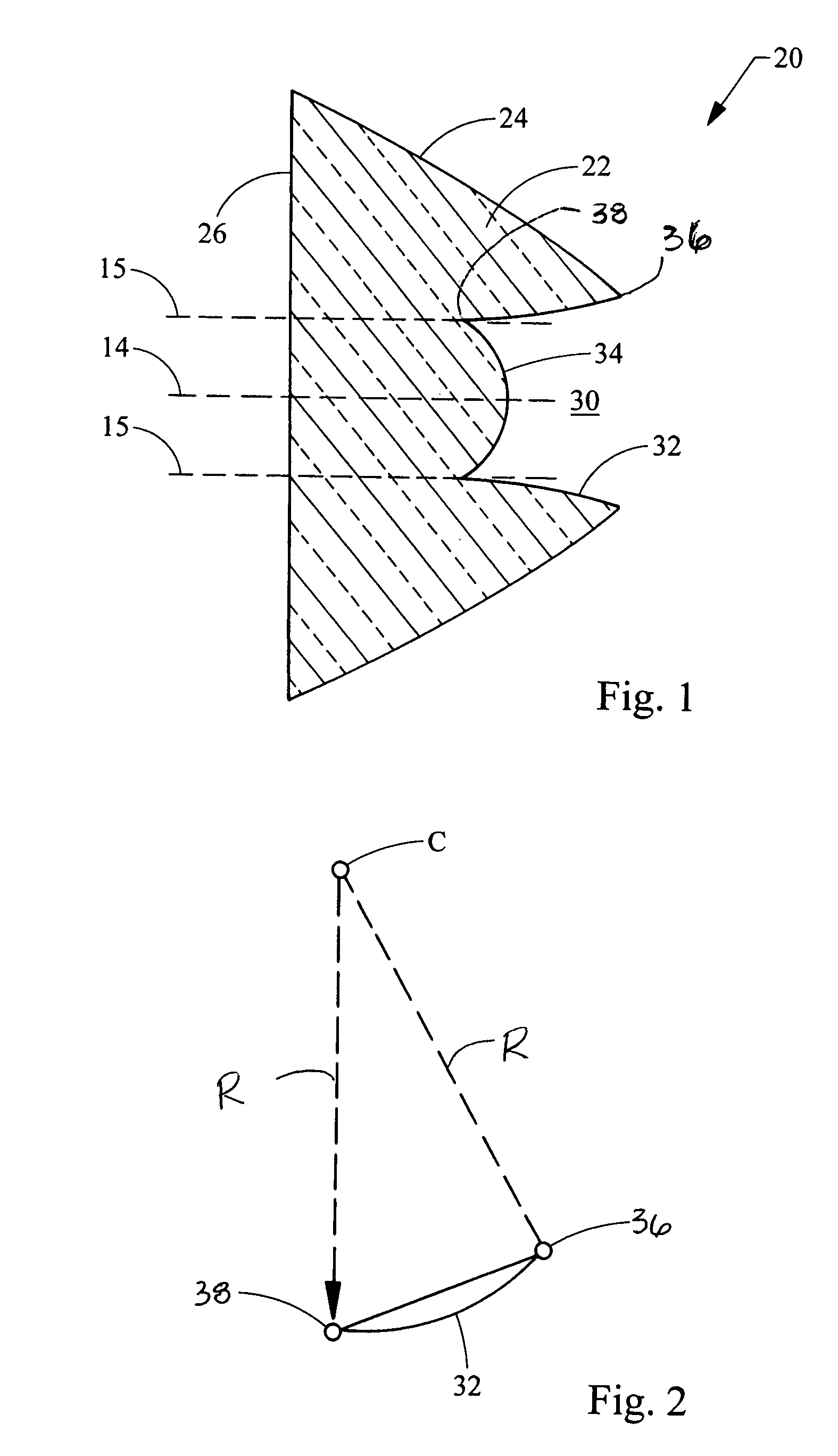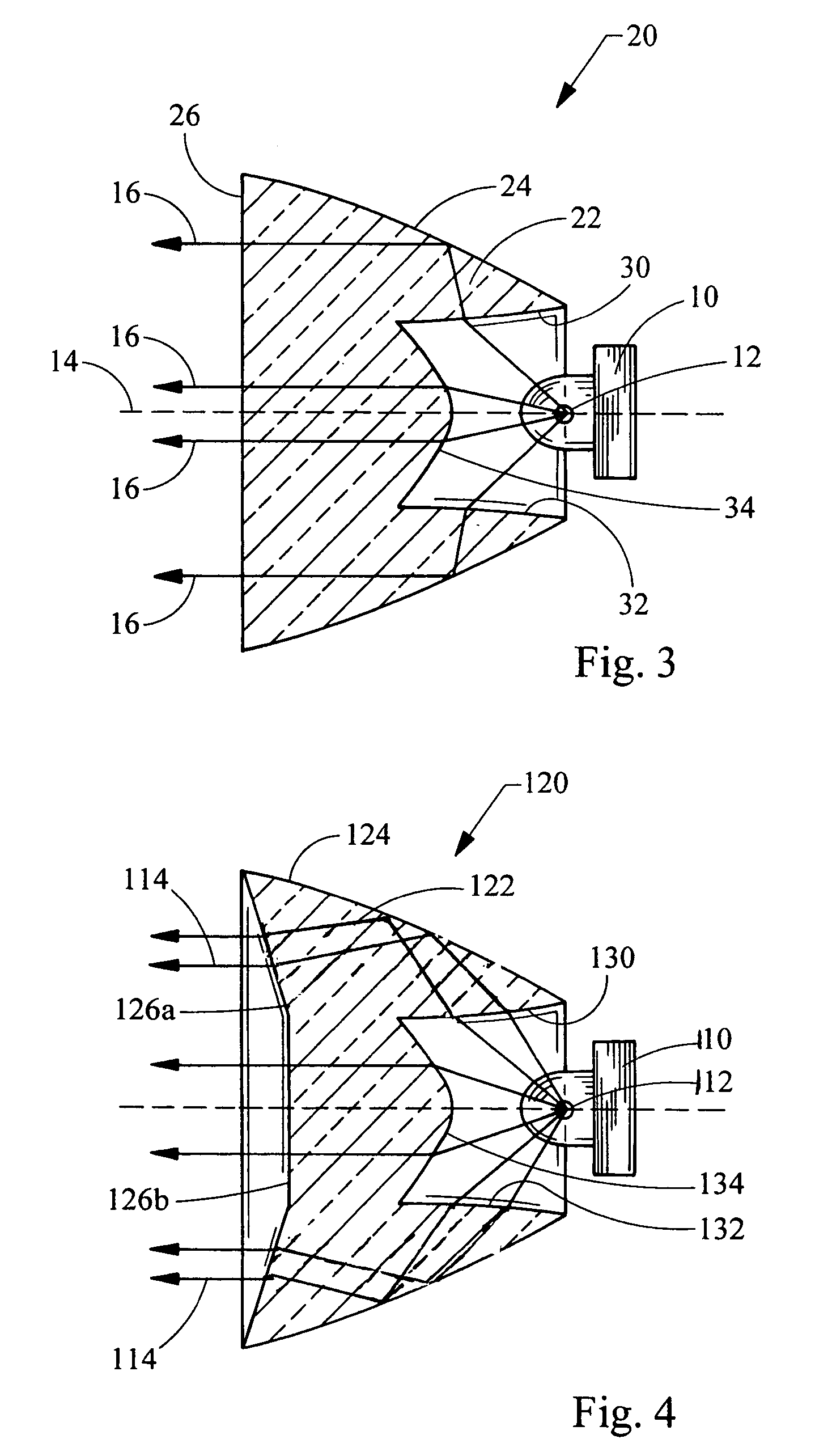Near field lens having reduced size
a near field lens and lens technology, applied in the direction of instruments, lighting and heating apparatus, transportation and packaging, etc., can solve the problems of high molding cycle time and require expensive molding tools and processes, and achieve the effect of reducing the size of the near field lens
- Summary
- Abstract
- Description
- Claims
- Application Information
AI Technical Summary
Benefits of technology
Problems solved by technology
Method used
Image
Examples
Embodiment Construction
[0012]Turning now to the figures, FIGS. 1 to 3 depict a near field lens 20 for an automotive lighting assembly having a light source 10. Preferably the light source 10 is a light emitting diode (LED) generating light from a source point 12. The NFL 20 generally defines a longitudinal axis 14 along which the NFL 20 collects, collimates and redirects the light 16 downstream from the light source 10.
[0013]The NFL 20 generally comprises a main body 22 having an outer radially facing surface 24 and an outer axially facing surface 26. The main body 22 is made of a light transmitting material, and preferably an optical grade plastic. The main body 22 defines a pocket 30 which receives the LED 10, or at least the light 16 from the LED 10. The pocket 30 is generally defined by an inner radially facing surface 32 and an inner axially facing surface 34. The inner axially facing surface 34 is curved, and more particularly is structured as a lens in order to axially collimate the light 16. As be...
PUM
 Login to View More
Login to View More Abstract
Description
Claims
Application Information
 Login to View More
Login to View More - R&D
- Intellectual Property
- Life Sciences
- Materials
- Tech Scout
- Unparalleled Data Quality
- Higher Quality Content
- 60% Fewer Hallucinations
Browse by: Latest US Patents, China's latest patents, Technical Efficacy Thesaurus, Application Domain, Technology Topic, Popular Technical Reports.
© 2025 PatSnap. All rights reserved.Legal|Privacy policy|Modern Slavery Act Transparency Statement|Sitemap|About US| Contact US: help@patsnap.com



